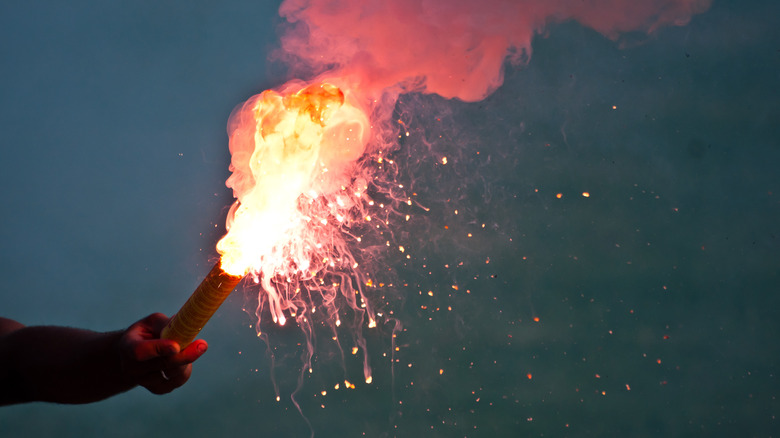How To Safely Use Distress Flares When Lost At Sea
We may receive a commission on purchases made from links.
Being lost at sea is a potentially dangerous situation. Thousands of people go missing each year while out on boating expeditions and a relatively small percentage of them are found. Whether it happens as a result of weather conditions, navigational error, your boat capsizing, engine failure, or some other cause, when your vessel is suddenly stranded in the middle of the water, the potential for a catastrophic conclusion is very real. So, it is a good idea for everyone who ventures out on a boat to know what to do if lost at sea.
Obviously, in order to be found, a boat must be seen. The further away you can be seen, the greater your chances for being rescued. That is why distress flares are required by the U.S. Coast Guard as emergency boating safety equipment. There are a variety of styles of distress flares, many of which can be used effectively during both day and night. However, as with any pyrotechnic device, flares have the potential to start a fire or cause other damage. In order to avoid making a bad situation worse, it is important to know how to safely use distress flares when lost at sea.
Types of distress flares and how to use them
The main types of distress flares used by recreational boaters are red hand-held flares. This type of flare is considered a line of sight tool, meaning it is only effective when a potential rescuer is within sight. Boat U.S. Foundation suggests using them only once a boat is sighted. Once a boat is within sight, activate the flare, holding it with your arm outstretched and pointing downwind. If you can do so safely, hold the flare out over the side of the boat. Be sure not to look directly at the flame, which should burn for approximately a minute.
A flare launcher gun, such as the Orion Safety Alerter, propels a flare up to 500 feet in the air, giving you the ability to be seen from a much greater distance. Parachute or rocket flares can be seen as far away as 10 miles during daytime and 40 miles away at night, which greatly increases your odds of being found. When firing a flare launcher gun, point the gun overhead with an outstretched arm, making sure no part of the boat or rigging is in the line of fire, then pull the trigger. If it is windy or cloudy, you should aim at a 45-degree angle to the horizon, again making sure nothing is in the line of fire, then pull the trigger.
All flares should be kept in a waterproof container that is easy to access and open. You should periodically check the expiration date on your flares and replace them before they expire. Additionally, it is a good idea to keep a pair of gloves stored with your flares. Wearing gloves makes it much safer to handle flares when in use.

